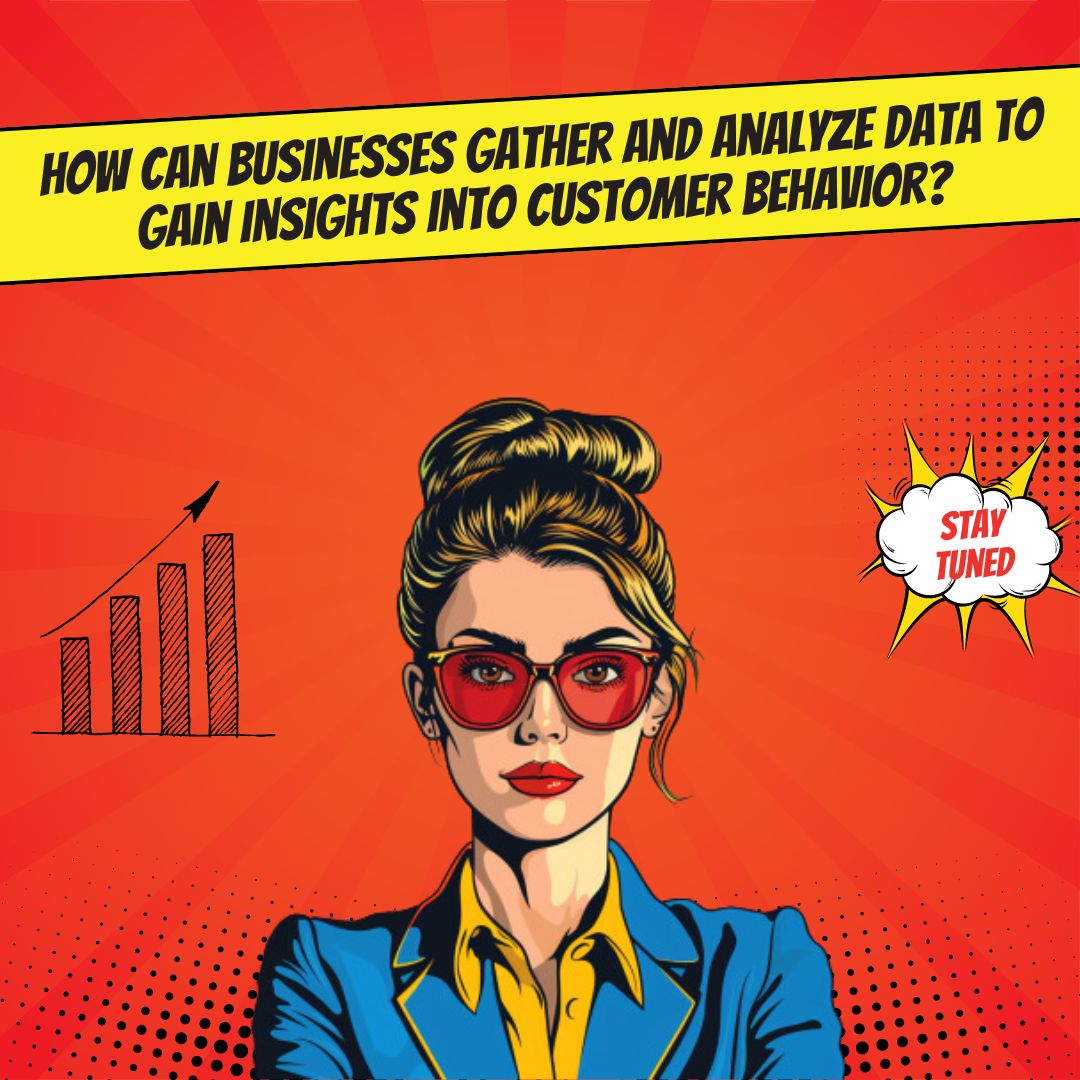Key Takeaways
✅ Understanding Consumer Behavior Enhances Marketing Strategies: Embracing the profound impact of consumer insights can revolutionize marketing efforts. Studies reveal that businesses that prioritize customer behavior analysis see a significant improvement in customer engagement and conversion rates. Tailor your campaigns to reflect consumer preferences, and watch your brand's appeal soar.
✅ Consumer Behavior Insights Drive Personalization and Retention: The digital age has ushered in an era where personalization is not just appreciated but expected. Leveraging behavior insights can lead to customized experiences, with statistics indicating a 20% uplift in customer satisfaction and a 10% increase in sales for businesses that successfully implement personalization strategies.
✅ Consumer Behavior Analysis Provides Competitive Advantage: In a marketplace where competition is fierce, having an edge is invaluable. Data shows that companies which diligently monitor and adapt to consumer behavior trends outperform their competitors by up to 85% in sales growth. Stay ahead by aligning your product offerings and marketing messages with emerging consumer demands.
Introduction
Why do some businesses thrive while others struggle to keep their doors open? The secret often lies in Understanding Customer Behavior: a critical component in crafting successful marketing strategies. Understanding Customer Behavior is not just about observing; it's about diving deep into what makes your customers tick, their preferences, hesitations, and motivations.
In today's oversaturated markets, the power of effective marketing lies in knowing your audience inside and out. This article sheds light on the latest techniques and tools for analyzing customer behavior, offering fresh perspectives and modern solutions designed to enhance your marketing effectiveness and, ultimately, your bottom line. Get ready to unlock actionable insights and groundbreaking strategies that will set you apart from the competition. Stay tuned for a journey into the heart of your target audience, where you'll learn not just to anticipate their needs but to anticipate market trends, ensuring your brand remains relevant and resonant.
Top Statistics
| Statistic | Insight |
|---|---|
| 94% of customers are more likely to return to a business after a positive customer service experience. | This highlights the significant impact of customer service on loyalty and retention. A reminder of the timeless truth that happy customers are the best advertisers. |
| 87% of shoppers begin product searches online. | Underscores the need for businesses to optimize their online presence, making it crucial to be visible and engaging from the first click. |
| 75% of consumers expect a consistent experience across all channels they engage with a brand. | This statistic emphasizes the importance of omnichannel marketing and the need for brands to deliver a seamless customer experience, whether in-store, online, or through social media. |
| By 2025, 90% of companies plan to deploy AI technologies to improve customer interactions. | A clear indicator of the direction in which the market is heading, showing the growing reliance on technology to further understand and serve customer needs. |
Understanding Customer Behavior: The Key to Effective Marketing
Why does understanding customer behavior matter so much for businesses today? Simply put, it's because knowing what your customers want and how they decide to buy can turn a good marketing campaign into a great one. It's not just about throwing out advertisements and hoping for the best. It's about getting into the minds of your potential buyers, figuring out their needs, desires, and preferences, and then tailoring your efforts to meet them right where they are. This understanding can significantly boost customer satisfaction and loyalty, which are gold in a competitive marketplace.
So, what influences how customers behave? It's a mix of personal factors like who they are (demographics), how they live (lifestyle), and their unique characteristics (personality). But it doesn't stop there. Psychological factors like what drives them (motivations) and what they believe in (attitudes and beliefs) play a big role, as do social and cultural factors including the impact of friends, family, and their cultural background. Each of these layers adds complexity to customer behavior, making it a fascinating puzzle for marketers to solve.
Moving on to the consumer decision-making process, it's a journey that starts with recognizing a need and ends with reflecting on the satisfaction with a purchase. Customers look for information, weigh their options, decide to buy, and then think back on their choice. Understanding this process helps businesses identify the best times and ways to communicate with potential buyers.
Analyzing customer behavior isn’t just a nice-to-have; it’s a must-do for businesses aiming to stay ahead. It involves closely watching how customers interact with your company across their journey, using tools like website and marketing analytics, and data from customer relationship management (CRM) systems. This analysis isn’t just about collecting data; it's about diving deep into what that data means—identifying different customer segments and understanding their unique preferences and behaviors.
Finally, applying these insights to marketing strategies is what sets successful businesses apart. It means personalizing marketing messages and content, crafting targeted campaigns, enhancing customer service, and even predicting future trends in consumer behavior. This tailored approach doesn't just hit the target; it leads to more effective marketing, satisfied customers, and ultimately, unwavering loyalty.
In essence, understanding and leveraging customer behavior is the cornerstone of effective marketing. It allows businesses to get creative with their strategies, ensuring that they're not just reaching their audience but engaging with them in meaningful ways. Armed with this knowledge, companies can design experiences that delight customers, fostering a strong connection that goes beyond the transaction.

AI Marketing Engineers Recommendation
Recommendation 1: Leverage Data Analytics to Understand Customer Preferences: People are all different - what they like, what they don't, how they spend their money. But when you look at it all together, patterns start to show up. Maybe you notice that people buy more from your online store late at night, or after reading a review. Use data analytics tools to dig into these behaviors. Tools like Google Analytics can show you not just who is buying, but how they got to you and what caught their eye. This way, you’re not just throwing things out there and seeing what sticks. You're making informed guesses based on real data.
Recommendation 2: Incorporate Social Listening to Catch Current Trends: Ever hear people say, "You’ve got to have your ear to the ground"? It means staying alert to what’s buzzing around you. For businesses today, that's social media. There are tools and platforms out there that can help you track what people are saying about your brand, your competitors, or even your industry online. This is called social listening. It’s like being a fly on the wall in a room full of your customers. What better way to understand your customer's behavior than by hearing it straight from them? It can tell you what’s hot and what’s not, giving you a heads up on what's coming next.
Recommendation 3: Use A/B Testing to Experiment and Learn: Remember when you were a kid and you tried mixing different paints to see what color you’d get? Well, A/B testing is kind of like that, but for understanding what your customers like. Here's how it works: you change one small thing in your marketing - say, the color of the 'buy' button on your website, or the subject line of your email. Then, you compare how people react to version A versus version B. Which one got more clicks? More sales? This is a simple, yet powerful way to learn about your customers' preferences. Plus, it’s a method that keeps proving its worth, regardless of how much marketing trends change.
Relevant Links
- Revolutionize Your Marketing with AI
- Master SEO on Baidu
- Navigating China's Digital Space with Analytics
- PPC Metrics for Success in China
- Strategies for Performance Marketing in India
Conclusion
Understanding customer behavior is not just a marketing strategy; it's a cornerstone for any business aiming to thrive in the modern market. Wrapping up, it's crystal clear why understanding customer behavior matters so deeply. It's the compass that guides businesses in crafting marketing strategies that are not only effective but also resonate on a personal level with their audience. Through the lens of personal, psychological, social, and cultural factors, we've seen how complex and varied customer behavior can be. Yet, the effort to decode these behaviors using tools like website analytics, CRM data, and more is a testament to how vital this understanding is.
The journey doesn't stop at gathering insights. The real magic happens when these insights are artfully applied to personalize marketing efforts, creating a feedback loop that increases customer satisfaction and loyalty. The implications of this approach are far-reaching—from shaping product development to fine-tuning marketing messages, each action informed by customer behavior analysis contributes to a stronger, more connected brand experience.
So, the burning question as we look ahead is, how can your business not only adapt but also innovate in interpreting and responding to ever-evolving customer behaviors? The data is out there, and the tools are at our disposal. Now is the time to dive deeper, explore uncharted territories within your market, and, most importantly, listen to what your customers are telling you through their behaviors. Let's step into a future where marketing is not just about selling, but about creating meaningful relationships built on a profound understanding of what drives our customers. Together, we can turn insights into actions that not only meet needs but anticipate them, setting a new standard for customer satisfaction and loyalty in the process.
FAQs
Question 1: What is consumer behavior?
Answer: Consumer behavior is all about diving deep into why folks like you and me decide to buy a product, use it, and then maybe share how we felt about it. It's like being a detective but for shopping habits.
Question 2: Why is understanding consumer behavior important?
Answer: It's super critical for businesses because it’s like getting a map to our hearts and wallets. Knowing what makes us tick helps them make stuff we actually want to buy and keep us coming back for more.
Question 3: What are the stages of the consumer journey?
Answer: Oh, it's quite the adventure! It kicks off with Awareness, slides into Consideration, makes its big move at Purchase, gets real during Usage, and wraps up with Feedback. Each part offers a unique chance to win us over.
Question 4: What are open-ended survey questions?
Answer: These are the questions that let you spill your thoughts without boxing you into a 'Yes' or 'No'. They’re looking for the story only you can tell about your experience.
Question 5: How do demographic questions help in understanding consumer behavior?
Answer: By asking about stuff like how old you are, where you live, or what you do for a living, companies get to paint a more detailed picture about who their customers are and what they need.
Question 6: What is the difference between market research and consumer research?
Answer: Market research is the big picture – think about sizing up the playing field, knowing the other players (aka competitors), and who’s sitting in the stands (that’s us, the customers). Consumer research, on the other hand, is more like getting to know the fans personally – what they love, why they cheer or boo, and what keeps them coming back.
Question 7: How can businesses effectively use consumer behavior surveys?
Answer: It's all about asking the right stuff without making it feel like homework. Keep it short, sweet, and to the point, and then actually use what you learn to make things better for us, your customers.
Question 8: What are some common mistakes to avoid in consumer behavior surveys?
Answer: Watch out for questions that lead the witness or are so filled with jargon that they might as well be in another language. And don’t forget to make sure you’re asking a diverse group of folks, not just the ones you think will give you the answers you want to hear.
Question 9: How can businesses leverage consumer behavior insights to improve marketing campaigns?
Answer: It’s like getting the cheat codes to our desires. By understanding what makes us tick, campaigns can be tailor-made to speak our language, tug at our heartstrings, or tickle our fancy, making it more likely we’ll take the bait.

Academic References
- McLeod, S. (2007). Maslow's Hierarchy of Needs. Simply Psychology. This source provides an in-depth discussion of Maslow's psychological theory, illustrating how consumer decisions are driven by a tiered set of needs ranging from basic survival to self-actualization. McLeod's breakdown helps marketers understand the importance of aligning their messages with consumers' varying needs at each level of Maslow's hierarchy.
- Engel, J.F., Blackwell, R.D., & Miniard, P.W. (1995). Consumer Behavior, 8th Edition. The Dryden Press. Engel, Blackwell, and Miniard offer a comprehensive look into the EKB Model of consumer behavior, detailing the decision-making process and its implications for marketing. Their work provides valuable frameworks for marketers aiming to enhance customer engagement and tailor strategies to consumer preferences.
- Kahneman, D., & Tversky, A. (1979). Prospect Theory: An Analysis of Decision under Risk. Econometrica, 47(2), 263-291. Through the lens of behavioral science, Kahneman and Tversky introduce Prospect Theory, which delves into how people make choices in situations involving risk. This foundational text is crucial for understanding consumer decision-making processes, highlighting the significance of psychological and cognitive factors over purely logical or economic ones.
- Wedel, M., & Kamakura, W.A. (2000). Market Segmentation: Conceptual and Methodological Foundations, 2nd Edition. Kluwer Academic Publishers. Wedel and Kamakura discuss the role of data analysis in identifying distinct groups within consumer markets, facilitating the development of targeted marketing strategies. Their work emphasizes the necessity for businesses to employ data-driven approaches to better understand and meet the needs of their consumers.










